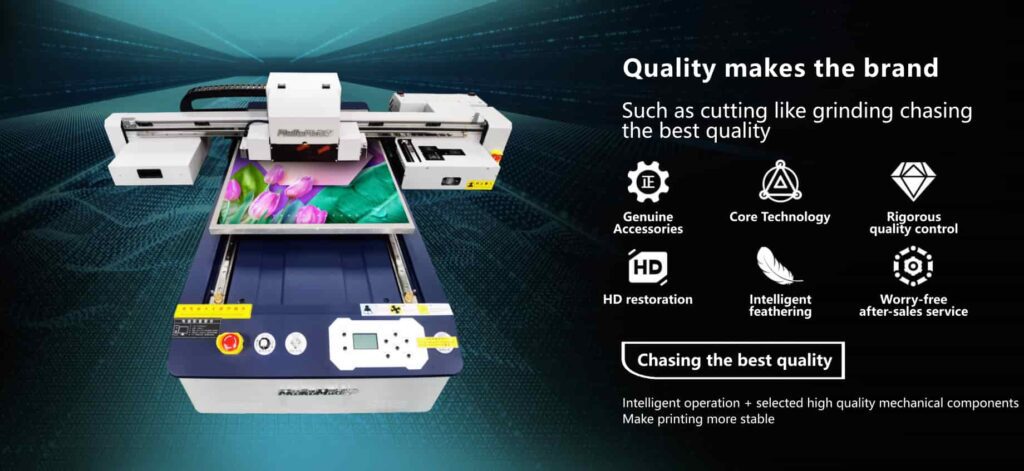The Evolution of Printers:
From Dot Matrix to Digital Masterpieces

The Evolution of Printers:
From Dot Matrix to Digital Masterpieces
The history of printing is a fascinating journey of innovation and technological advancements. From the early days of the dot matrix printer to today’s sophisticated 3D printers, this evolution has significantly impacted the way we produce and consume printed materials. Let’s take a closer look at this transformation and how it has shaped the modern printing industry.
The Early Days: Dot Matrix Printers
The dot matrix printer was the workhorse of the printing world in the late 20th century. Introduced in the 1970s, these printers used a print head that moved back and forth or in an up-and-down motion, striking an ink-soaked ribbon against the paper to produce characters and illustrations. Each character was formed by a pattern of dots, which gave these printers their name.
While dot matrix printers were known for their durability and low operational costs, they were also loud and produced relatively low-quality printouts compared to today’s standards. Nevertheless, they were widely used in businesses for printing invoices, receipts, and other transactional documents.
The Rise of Inkjet Printers
The 1980s and 1990s saw the emergence of inkjet printers, which revolutionized the printing industry. Inkjet technology works by propelling droplets of ink onto paper, creating high-resolution images and text. These printers offered several advantages over dot matrix printers, including quieter operation, higher print quality, and the ability to print in color.
Inkjet printers quickly became popular in both homes and offices due to their affordability and versatility. They could print photos, documents, and even labels, making them a go-to choice for a wide range of printing needs.
The Laser Printer Revolution
Around the same time as the inkjet printer’s rise, the laser printer began to make its mark. Introduced by Xerox in 1969 and commercially released by IBM in 1976, laser printers use a laser beam to produce an image on a drum, which is then transferred to paper using toner. This technology allowed for much faster printing speeds and higher-quality output compared to previous technologies.
Laser printers became the preferred choice for businesses due to their efficiency and capability to handle large volumes of printing. They were particularly valued for producing sharp, professional-looking documents, making them indispensable in corporate environments.
MooTooM-WuTeng is a domestic design, R & D, production, sales as one, and has a wide-format digital printing, UV printing, digital printing and related supplies, the core intellectual property rights of manufacturers.
Recent News
The Digital Age: Multifunction Printers
As technology continued to advance, the late 1990s and early 2000s saw the introduction of multifunction printers (MFPs), also known as all-in-one printers. These devices combined printing, scanning, copying, and faxing capabilities into a single machine, offering a compact and cost-effective solution for both home and office use.
MFPs leveraged the advancements in digital technology to offer features such as wireless connectivity, mobile printing, and cloud integration. This convergence of functionalities streamlined workflows and enhanced productivity, solidifying the multifunction printer’s place in the modern printing landscape.
The 3D Printing Revolution
Perhaps the most groundbreaking development in the world of printing is the advent of 3D printing. Unlike traditional printers that produce flat, two-dimensional images on paper, 3D printers create three-dimensional objects by layering materials such as plastic, metal, or resin. This technology, first developed in the 1980s, has seen significant advancements in recent years.
3D printing has opened up new possibilities in various fields, including manufacturing, healthcare, and design. It allows for rapid prototyping, custom manufacturing, and even the creation of complex structures that would be impossible to produce using traditional methods. The impact of 3D printing on industries and everyday life continues to grow, demonstrating the limitless potential of printing technology.


The Future of Printing
As we look to the future, the printing industry shows no signs of slowing down. Innovations in nanotechnology, materials science, and artificial intelligence are expected to drive the next wave of advancements. We can anticipate even higher printing speeds, greater precision, and new applications that we can only begin to imagine.
The evolution of printers from dot matrix to digital masterpieces highlights the incredible progress made over the past few decades. As a company at the forefront of this industry, we are excited to see what the future holds and remain committed to providing our customers with the latest and most innovative printing solutions.
Stay tuned for more updates and insights as we continue to explore the ever-evolving world of printing technology.
CONTACT US
If you have any questions, suggestions, or are interested in working with us, we will be happy to respond to your message!
Telephone:
+86 18588115418
No.260 Hongsong road, High &New Technology Industrial Development zone, Zhengzhou city, China.





1.jpg)


